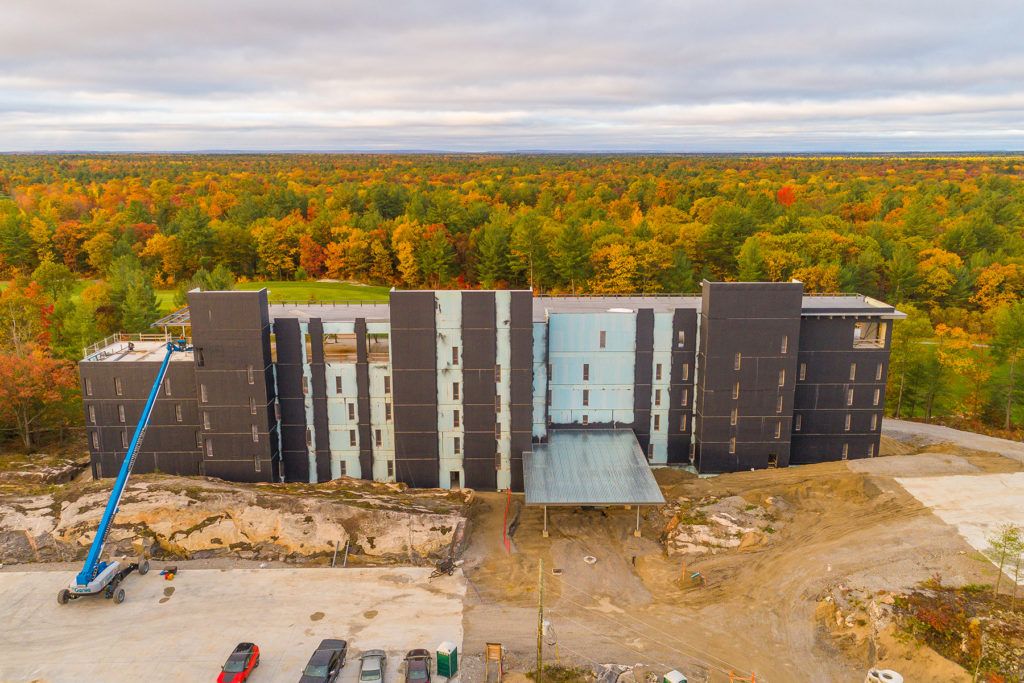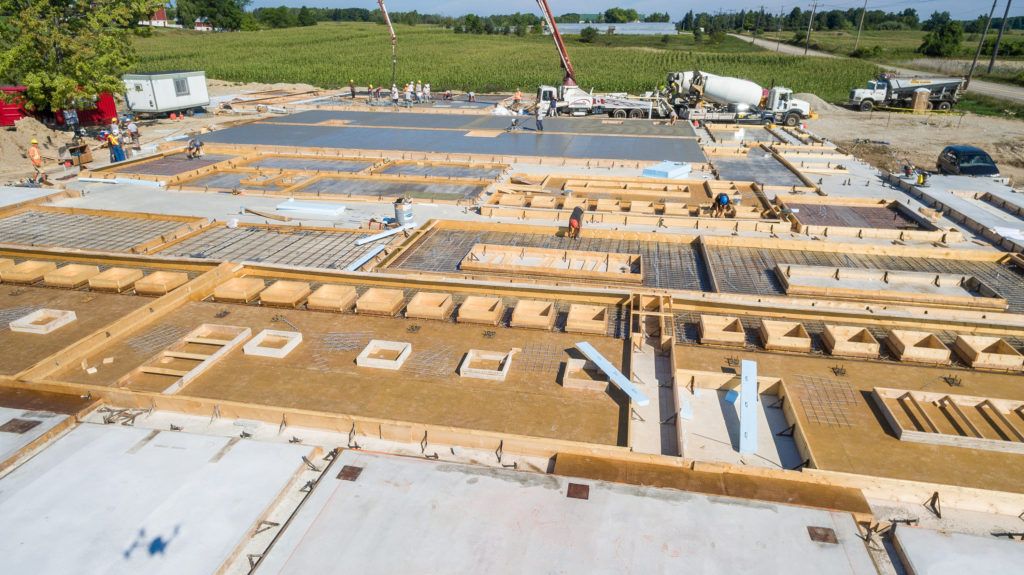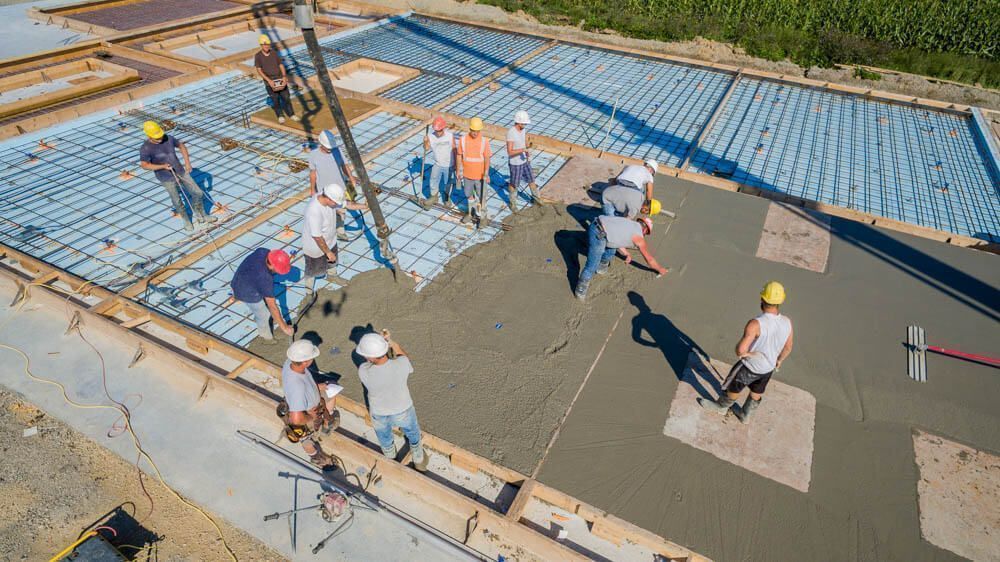The Top 10 Ways to Save Money on Your Next Project

Since you are in the Canadian construction industry, you understand the challenges of completing a job while also keeping the budget on track. A major component of any project is wall construction, which is where tilt-up construction offers huge financial savings.
Consider for a moment all of the ways you could lose money on a project: supplier issues, labour issues, budgeting issues, weather issues, and the list goes on.
Tilt-up construction through Tilt Wall is Ontario’s leading alternative to the high costs of traditional wall construction techniques.
Tilt-up Helps You Cut Costs Without Cutting Corners
Tilt-up Construction Lowers Your Material Costs
Sourcing steel can not only be difficult, but steel can also be time-consuming to produce and face many delays. The primary material used in a tilt-up panel is concrete, which is readily available throughout Ontario.
By using mostly locally sourced materials and reducing material complexities, tilt-up is a great way to lower your costs, whether you are building a hotel, school, warehouse or affordable housing project.

Tilt-up Construction Uses Local Trades
Fewer professional trades are needed with tilt-up construction than with other construction methods. Plus, local labourers can be quickly trained in tilt-up techniques. For most aspects of a tilt-up project, only traditional skills are required and include creating wooden forms, installing reinforcement, placing insulation and taking part in basic masonry work.
Tilt-up panel construction also requires fewer specialized tools, meaning when you consider all of the efficiencies with local trades, the resources needed to create a panel are often less.

Placing Concrete On-site Lowers Transportation Costs
Why produce concrete panels offsite and truck them to your building site when you can avoid the high cost of transportation altogether? The Clarington Transformer Station project is a prime example of transportation cost savings since its original precast concrete design was more expensive than tilt-up.
There is also the Russell Reid Public School in Brantford. The classroom expansion design was based on a precast build, but the school leaders needed to find ways to cut costs. Choosing tilt-up allowed them to keep their plans similar while also making the project more affordable.
Tilt-up Projects are Completed Faster
Building schedules are often shorter than other wall construction techniques like precast and steel. This faster ROI is due to several factors, such as the time savings with material handling, simplified installation of wall components, winter construction efficiencies, and ground-level construction with erection happening very quickly.
Tilt-up Panels are Incredibly Durable
Concrete is a very durable material. This strength ensures that repairs are few, and when repairs are needed, they can be fixed quickly and effectively with no sign of damage.
Tilt-up panels are also fire-resistant. The concrete used in tilt-up panels meets the fire-resistance standards of even the most demanding building codes. For example, a 6.5″ concrete wall offers a fire-resistance rating of four hours or more.

Tilt-up Panels Create an All-in-one Wall System
Tilt-up panels are assembled at ground level and have many elements that a wall needs: exterior finish, protective air barrier, insulation, structural layer and interior finish. Within the wall, prior to placing concrete, contractors install electrical boxes and conduits.
When the wall panel is raised into place, much of the wall work is already done, saving time and money.
Tilt-up Offers Affordable Design Flexibility
There’s no need to spend extra money on a brick exterior or other design aesthetics since embeds and colours can be added at the construction site.
This design flexibility ensures that when your concrete wall panels are tilted into place, the exterior you want and need is practically finished.

A Facility Built Using Tilt-up Construction Reduces Noise Pollution
For buildings that have the potential to emit a great deal of noise in a neighbourhood, tilt-up construction is here to help.
Whether you are building a manufacturing facility with heavy machinery, an elementary school filled with vocal children, or a hotel with annoying neighbours, containing noise is a chief responsibility in building design.
Tilt-up panel design limits noise: concrete’s density/mass, concrete’s ability to deflect sound waves away from walls, and fewer gaps in the wall systems.
Tilt-up Panels Are Energy Efficient
Imagine large concrete panels with few thermal bridges sandwiched with insulation – this is what gives tilt-up buildings their energy efficiency.
Concrete also uses thermal mass to keep buildings warm in winter and cool in summer, ensuring that high-cost energy systems are required less than other building systems.
Tilt Wall was contracted to complete the walls for Grace Christian School in Dundas. By using tilt-up construction, the charity reduced construction costs and now enjoys lower operational costs (heating/cooling) for decades to come.

Safety Savings
Although this last point isn’t directly related to monetary savings, it would be remiss not to include the safety benefits of tilt-up construction. With most of the construction work taking place at ground level, workers favour tilt-up sites where only a few require work at a higher elevation.
Reach Out and Learn More About Saving Money with Tilt-up
Tilt Wall is Ontario’s tilt-up construction leader, here to help guide you through the construction process and to help you build better in every way.
Let us help to show you the economic advantages of choosing tilt-up.
Contact
"*" indicates required fields
